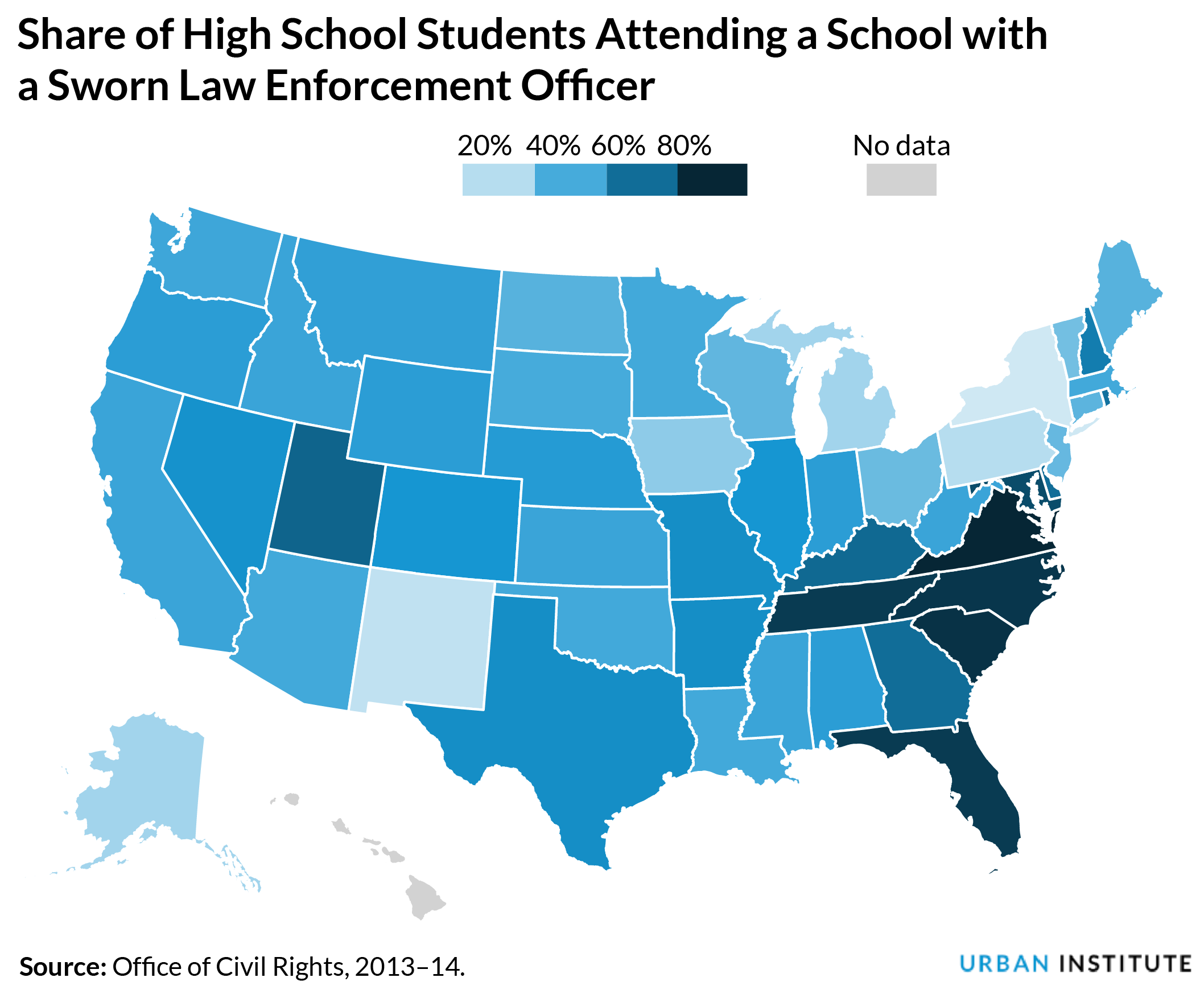
Photo by Carl D. Walsh/Portland Press Herald via Getty Images.
In light of the many school shootings this year, parents, teachers, and policymakers have shown renewed interest in the utility and prevalence of police officers in schools. Our new analysis finds that more than two-thirds of high school students already attend a school with a police officer present, and students in some mid-Atlantic and southern states and students attending schools with a sizeable share of black and Hispanic students are more likely to be attending a school that has a police officer.
Proponents of police in schools argue that police create safe spaces for students to learn and deter students from crime and other problematic behavior. Critics argue that police in schools do little to deter crime and can criminalize students for behavioral issues that police are ill equipped to address.
Research on the effects of police on student and school outcomes is limited, and the evidence that does exist is mixed. A 2013 study found that as schools add police, they record more weapons and drugs crimes and report larger numbers of nonserious violent offenses to law enforcement. An earlier study found that the presence of a school resource officer, a sworn law enforcement officer assigned to one more schools after receiving training in school policing, is associated with more arrests for disorderly conduct but fewer arrests for assaults and weapons charges. A third study found the presence of police in schools does not improve student behavior.
We used data from the US Department of Education Office of Civil Rights to investigate the prevalence of sworn law enforcement officers in schools. As with other safety and security measures, including strict dress codes, video cameras, and metal detectors, we find that students’ exposure to police in schools varies by school level.
In every state, high school students are more likely than middle and elementary school students to attend a school with at least one police officer. Sixty-seven percent of high school students, 45 percent of middle school students, and 19 percent of elementary school students attend a school with a police officer.

Students attending high schools that have substantial shares of black or Hispanic students attend schools with a police officer at higher rates than students attending schools with few black and Hispanic students.

The presence of police in schools varies by region and state. In six southern and mid-Atlantic states (Florida, Maryland, North Carolina, South Carolina, Tennessee, and Virginia), more than 90 percent of high school students attend a school that has a police officer. In northeastern and midwestern states, the variance in exposure to a police officer is larger.
There are also large racial and ethnic disparities in who attends a school with a police officer in midwestern states. In Iowa, Nebraska, North Dakota, Oklahoma, and South Dakota, black students attend schools with a police officer at a rate that is 20 percent higher than white students.
Attending school with at least one police officer present is the typical experience (68 percent) for US public high school students. Policymakers and practitioners should consider differences in police presence by region and by the share of students of color in the context of discussions on racial and ethnic disparities in discipline and the “school-to-prison” pipeline.
While we wait for evidence on whether the presence of officers is an effective way to improve school climate and safety, we should press forward in understanding variation in how officers are assigned to, deployed, and used in schools and how their effects, positive and negative, vary based on student and school characteristics and local contexts.
Let’s build a future where everyone, everywhere has the opportunity and power to thrive
Urban is more determined than ever to partner with changemakers to unlock opportunities that give people across the country a fair shot at reaching their fullest potential. Invest in Urban to power this type of work.